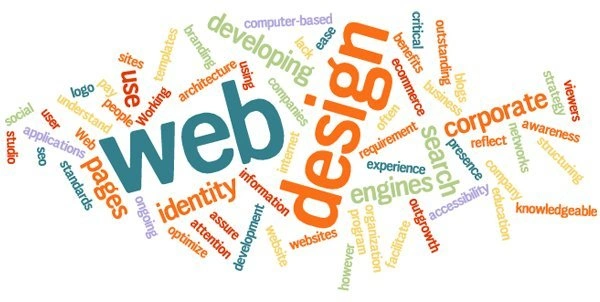The Ideal Kinds of Website Design to Boost Individual Experience and Involvement
In the ever-evolving landscape of electronic communication, the performance of Web layout considerably affects individual experience and interaction. Numerous style strategies, such as minimal, receptive, and interactive formats, each deal unique benefits that can provide to varied customer needs.
Minimalist Web Design
As electronic landscapes come to be significantly chaotic, minimal website design has become a powerful approach to enhancing customer experience. This layout approach focuses on simplicity, focusing on important elements while removing unneeded diversions. By using sufficient white space, uncomplicated navigating, and a restricted color scheme, minimal design fosters quality and guides user focus to essential content.
The core concept of minimal Web layout is to produce a smooth interaction for customers. By lowering cognitive tons, customers can swiftly comprehend details without really feeling overwhelmed. This straight technique not only enhances usability however likewise urges interaction, as site visitors are a lot more likely to check out a site that is aesthetically appealing and simple to navigate.
Additionally, minimal style commonly stresses typography and images, making use of these components purposefully to convey messages efficiently. In essence, minimalist Web design is not just a trend; it is a thoughtful approach that acknowledges the significance of user-centered style.
Responsive Web Style
In today's diverse digital atmosphere, responsive Web design has become essential for creating a seamless user experience throughout a plethora of gadgets. As individuals gain access to web sites on smartphones, desktop computers, laptops, and tablets, the capacity of an internet site to adapt its layout and web content to various screen dimensions and resolutions is vital.
Responsive website design utilizes flexible grids, photos, and CSS media inquiries to guarantee that Web content exists ideally, despite the device utilized. This method not only enhances the aesthetic appeal of an internet site yet also dramatically enhances use. Customers are much more likely to involve with a site that uses a constant experience, as it eliminates the frustration of needing to zoom in or scroll exceedingly.
By taking on responsive style, organizations can improve their visibility and reach a more comprehensive audience. In recap, responsive Web design is a fundamental technique that boosts user experience, involvement, and total contentment.
Interactive Web Layout
Receptive website design prepares for enhancing individual experience, however interactive Web layout takes this a step even more by involving customers in a much more dynamic means - Aligned Position Web Design. By incorporating elements such as animations, clickable models, and real-time comments, interactive website design captivates users, attracting them into a richer browsing experience
This approach not just cultivates interaction yet additionally motivates individuals to explore material actively instead of passively consuming it. Strategies such as gamification, where customers make benefits for finishing tasks, can considerably boost the moment invested in a site and improve overall satisfaction. Furthermore, interactive attributes can streamline complicated information, making it more satisfying and absorbable.

Integrating interactive design elements can likewise result in greater conversion rates, as customers are much more most likely to involve with a site that proactively includes them. Aligned Position Web Design. Ultimately, interactive Web layout transforms customer experiences into remarkable trips, ensuring that site visitors return time after time
Apartment Style
Identified by its minimalistic approach, flat design highlights simpleness and performance, removing unnecessary elements and concentrating home on crucial features. This style approach focuses on functionality, making certain that customers can browse user interfaces with convenience and effectiveness. By utilizing a tidy aesthetic, flat style gets rid of the mess often found in more ornate designs, therefore boosting customer emphasis on web content and capability.
The characteristic of level style depends on its use of strong colors, simple typography, and geometric forms. These aspects add to a visually appealing interface that is both modern-day and friendly. Furthermore, flat layout promotes a sense of clarity, allowing customers to determine vital actions and information without interruption.
Furthermore, flat style is specifically effective in receptive Web layout, as its simplicity translates well across numerous devices and screen dimensions. By concentrating on important functions, level design not just meets user needs but also motivates smooth interaction, making it an important part of efficient Web style strategies.
Flexible Web Design
Flexible website design customizes the customer experience by creating several dealt with layouts tailored to various screen sizes and tools. Unlike receptive design, which fluidly readjusts a single layout, flexible design employs unique layouts for certain breakpoints, making certain optimum presentation on numerous platforms. This strategy enables developers to concentrate on the unique qualities look at more info of each device, improving functionality by delivering specifically what customers need based on their context.
One of the key benefits of adaptive website design is its ability to optimize tons times and performance. By offering customized material and pictures that fit the customer's device, websites can lessen data use and boost loading speeds. This is especially useful for users with slower connections or minimal data strategies.

Additionally, flexible design assists in a more controlled and consistent branding experience. Given that developers produce numerous layouts, they can make sure that the visual elements line up with the brand name's identity throughout various platforms - Aligned Position Web Design. This causes a natural user experience, enhancing interaction and advertising individual retention
Verdict
Minimalist style cultivates quality and emphasis, while responsive layout makes sure versatility throughout numerous tools, promoting ease of access. Collectively, these style approaches contribute to the production of easy to use environments that not only enhance fulfillment yet likewise drive higher conversion rates, emphasizing their critical significance in modern Web style approaches.

Minimal design fosters clearness and focus, while responsive design makes sure adaptability across different tools, advertising ease of access. Collectively, these layout approaches add to the creation of easy to use environments that not just improve contentment but additionally drive greater conversion prices, emphasizing their essential importance in modern Web design techniques.
Comments on “Aligned Position Web Design: Building Responsive, Mobile-Friendly Websites for Modern Users”